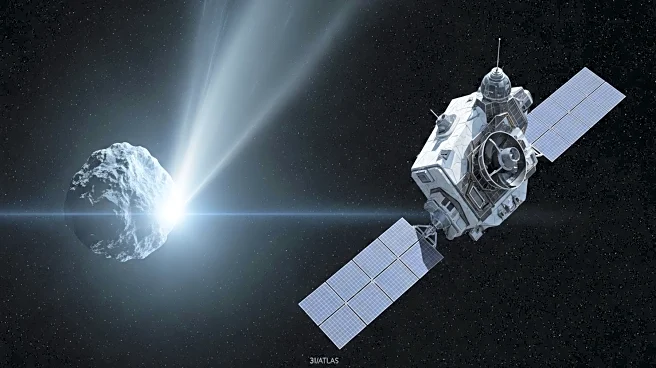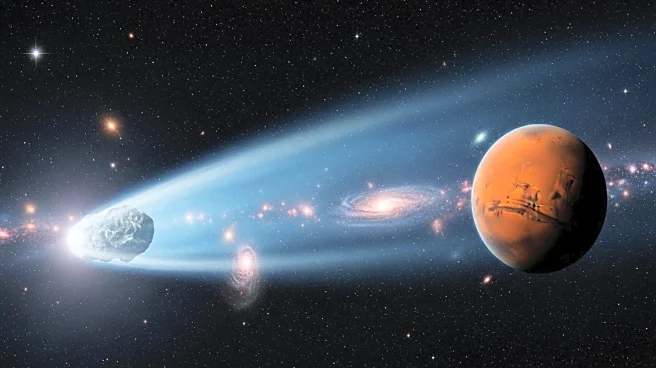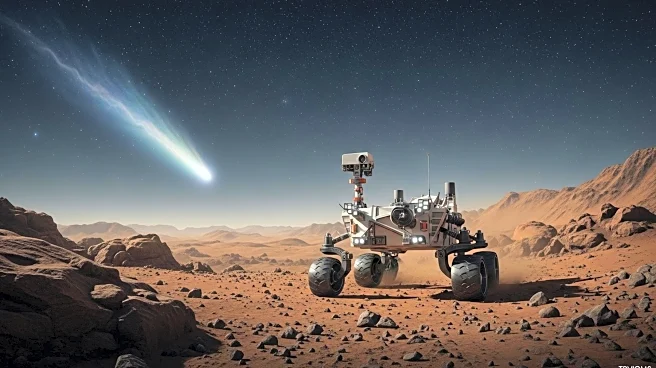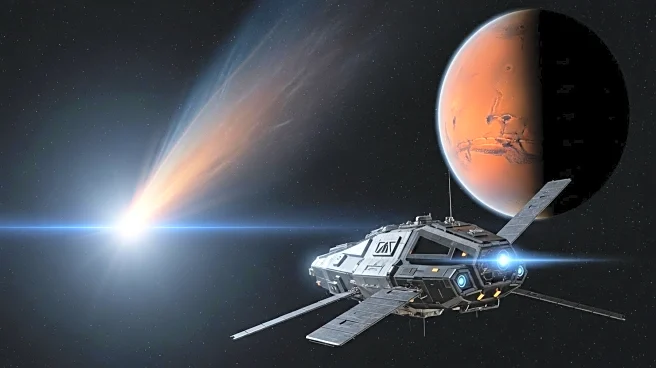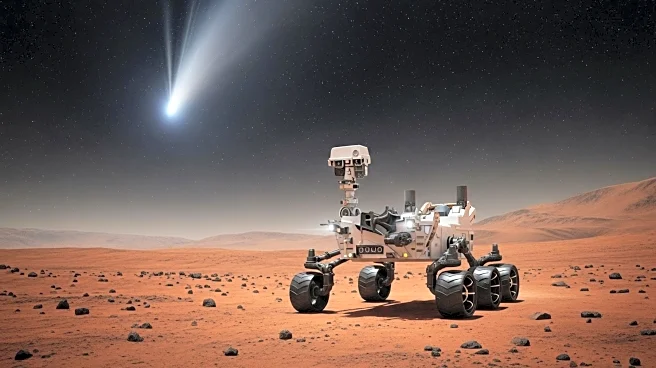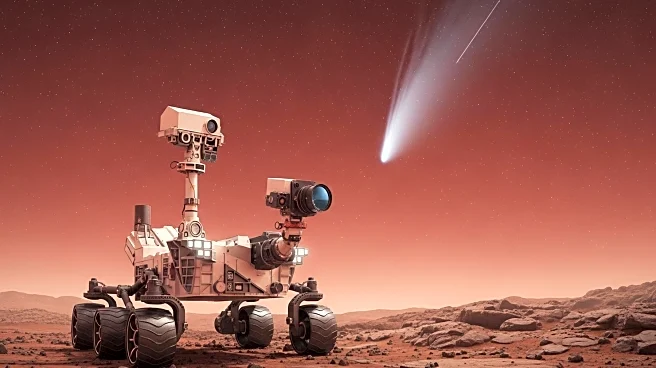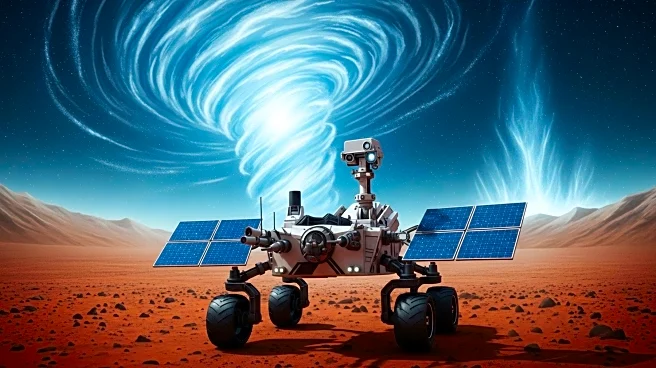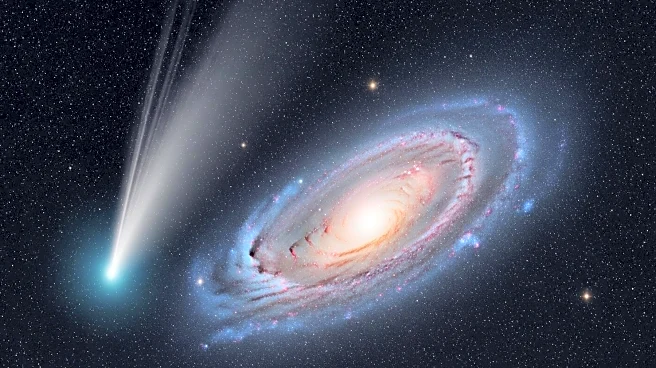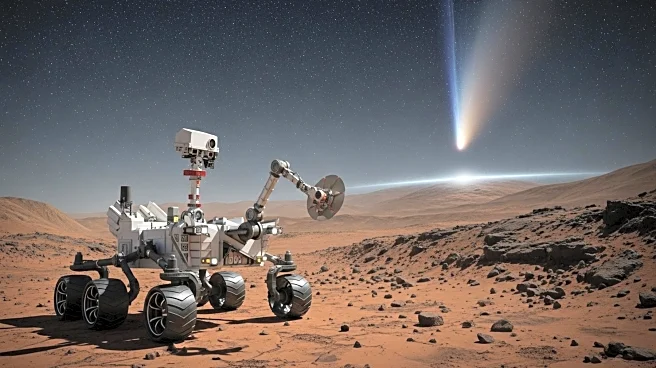What's Happening?
The European Space Agency's ExoMars Trace Gas Orbiter captured images of the interstellar comet 3I/ATLAS as it passed close to Mars on October 3, 2025. The comet, which is the third confirmed interstellar object to enter our solar system, was observed from a distance of 19 million miles. The orbiter used its Colour and Stereo Surface Imaging System to capture the comet, which is significantly fainter than typical targets. The comet's flyby offers a unique opportunity for scientists to study its characteristics and gather information about its origin.
Why It's Important?
The observation of 3I/ATLAS provides valuable insights into interstellar objects, which carry information about distant regions of the universe. Understanding these objects can enhance our knowledge of the formation of celestial bodies beyond our solar system. The data collected from this flyby could contribute to scientific research on the composition and trajectory of interstellar comets, potentially revealing clues about their ancient origins.
What's Next?
The European Space Agency plans to continue analyzing the images captured by the ExoMars Trace Gas Orbiter to extract more data on the comet's size and composition. Other spacecraft, including ESA's JUICE probe, are scheduled to observe 3I/ATLAS as it approaches the sun in late October. These observations will help scientists further understand the comet's properties and its journey through the solar system.
Beyond the Headlines
The study of interstellar comets like 3I/ATLAS highlights the importance of international collaboration in space exploration. As agencies work together to observe and analyze these objects, they contribute to a collective understanding of the universe, fostering scientific advancements and technological innovation.

